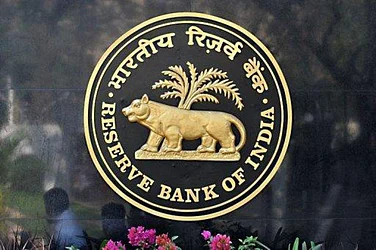Reserve Bank of India (RBI) Governor Shaktikanta Das has cautioned about the structural liquidity risk that banks will face if they continue resorting to non-retail deposits to meet the rising credit demand. He said this at the conclusion of the monetary policy committee (MPC) meeting on August 8, 2024.
Though Das highlighted the resilience and strength of the Indian financial system, he red-flagged the rapid growth in home equity loans (top-up home loans) without following regulatory prescriptions, along with the growth in certain segments of personal loans. He called on banks to mobilise household financial savings through innovative products.
Advertisement
Three Risks That May Affect Structural Liquidity Of Banks
Das said the Indian financial system remained resilient and was gaining strength from broader macroeconomic stability. “It’s well-capitalised and unclogged balance sheet is reflective of higher risk absorption capacity. The non-banking financial companies (NBFC) sector and the urban cooperative banks also continue to show improvements,” he said.
However, even in such stable financial conditions, the emphasis cannot shift away from proactive identification of potential risks and challenges, if any, he added.
He pointed out to three risks that could affect the structural liquidity of banks.
Risk 1: According to Das, alternative investment avenues were becoming more attractive for retail customers, and banks were facing challenges on the funding front with bank deposits trailing loan growth.
Advertisement
As a result of this, banks were taking greater recourse to short-term non-retail deposits and other instruments of liability to meet the incremental credit demand. This could potentially expose the banking system to structural liquidity issues, he said.
“Banks may, therefore, focus more on mobilisation of household financial savings through innovative products and service offerings, and by leveraging fully on their vast branch network,” he said.
He said that pre-emptive regulatory measures announced by the RBI in November 2023 had led to moderation in credit growth, but certain segments of personal loans continued to witness high growth.
Risk 2: Das said that excess leverage through retail loans, mostly for consumption purposes, needed careful monitoring from the macro-prudential point of view.
“It calls for careful assessment and calibration of underwriting standards, as may be required, as well as post-sanction monitoring of such loans,” he added.
Risk 3: The third risk Das pointed out related to home equity loans, or top-up home loans as they are called in India, which has grown at a brisk pace. Banks and NBFCs were offering top-up loans on other collateralised loans, such as gold loans, too, he said.
“It is noticed that the regulatory prescriptions relating to loan to value (LTV) ratio, risk weights and monitoring of end-use of funds are not being strictly adhered to by certain entities. Such practices may lead to loaned funds being deployed in unproductive segments or for speculative purposes. Banks and NBFCs would, therefore, be well-advised to review such practices and take remedial action,” he said.
Advertisement
Ashwini Kumar Tewari, managing director, SBI, was quoted by CNBC TV 18 as saying: “The step of increasing the frequency of reporting to the credit information agency is a good one, as loans are being taken at a very fast pace. The RBI has done well to flag the concern of a challenge where credit is outpacing deposit growth. Bankers are trying to substitute the regular retail growth through short-term non-retail deposits that can create a liquidity issue.”
At present, lenders are required to report credit information to credit information companies (CICs) on a monthly basis or at shorter intervals as may be agreed upon by the lenders and the CICs. RBI proposed to increase the frequency of reporting of credit information to a fortnightly basis or at shorter intervals.
Advertisement
With this development, borrowers will now benefit from faster updation of their credit information, especially when they repay their loans. The lenders, on their part, will be able to make better risk assessment of borrowers.
With credit growth outpacing deposit growth, banks have also raised their term deposit rates in addition to mobilising funds through higher issuances of certificate of deposits. In 2024-25 (up to July), certificate of deposit issuances amounted to Rs 3.2 lakh crore as compared to Rs 1.9 lakh crore in the corresponding period of 2023-24.
Repo Rate Unchanged
The MPC meeting today decided to keep the policy repo rate unchanged at 6.50 per cent, along with the standing deposit facility (SDF) rate at 6.25 per cent and the bank rate at 6.75 per cent.














